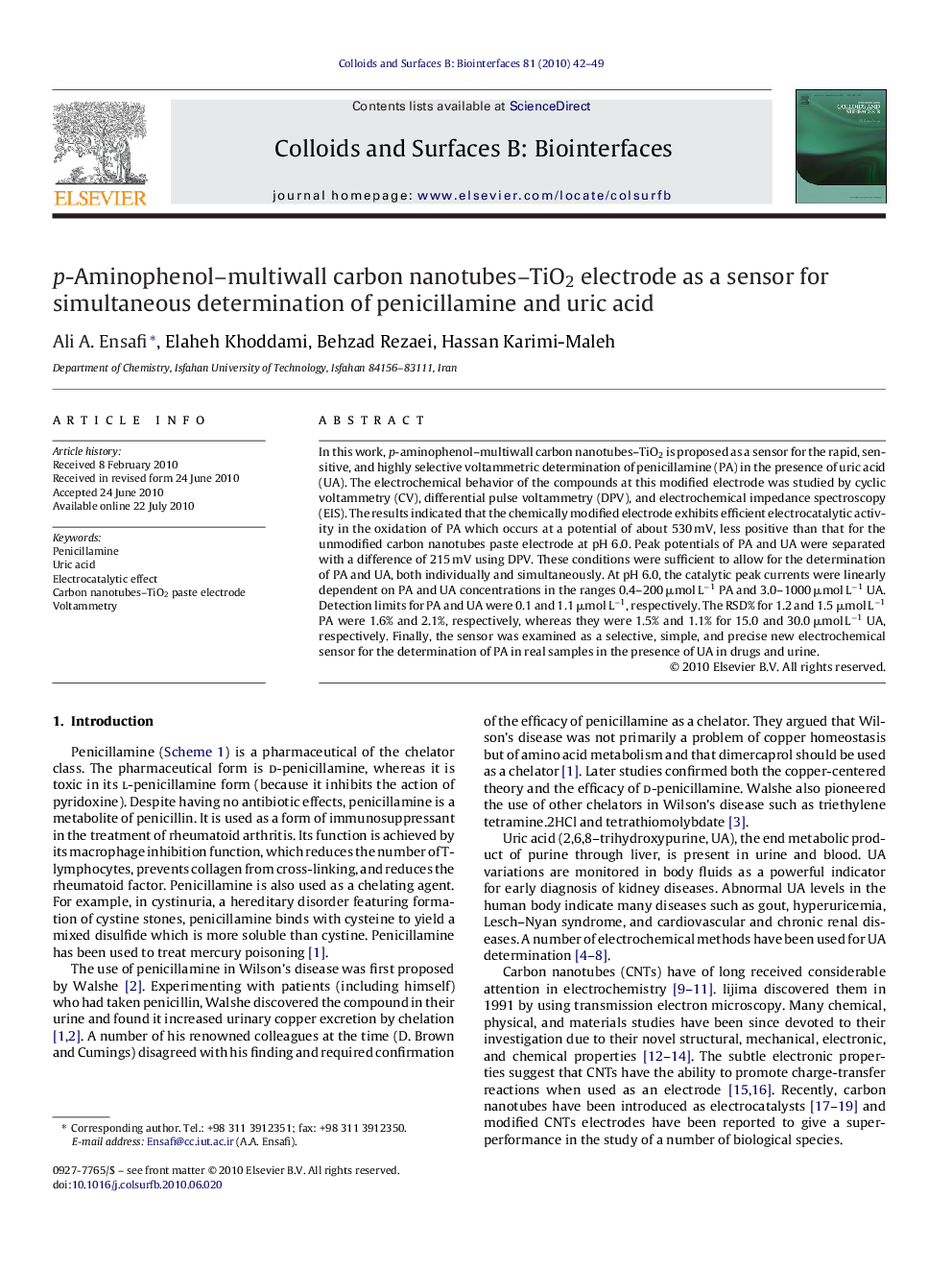| Article ID | Journal | Published Year | Pages | File Type |
|---|---|---|---|---|
| 601580 | Colloids and Surfaces B: Biointerfaces | 2010 | 8 Pages |
In this work, p-aminophenol–multiwall carbon nanotubes–TiO2 is proposed as a sensor for the rapid, sensitive, and highly selective voltammetric determination of penicillamine (PA) in the presence of uric acid (UA). The electrochemical behavior of the compounds at this modified electrode was studied by cyclic voltammetry (CV), differential pulse voltammetry (DPV), and electrochemical impedance spectroscopy (EIS). The results indicated that the chemically modified electrode exhibits efficient electrocatalytic activity in the oxidation of PA which occurs at a potential of about 530 mV, less positive than that for the unmodified carbon nanotubes paste electrode at pH 6.0. Peak potentials of PA and UA were separated with a difference of 215 mV using DPV. These conditions were sufficient to allow for the determination of PA and UA, both individually and simultaneously. At pH 6.0, the catalytic peak currents were linearly dependent on PA and UA concentrations in the ranges 0.4–200 μmol L−1 PA and 3.0–1000 μmol L−1 UA. Detection limits for PA and UA were 0.1 and 1.1 μmol L−1, respectively. The RSD% for 1.2 and 1.5 μmol L−1 PA were 1.6% and 2.1%, respectively, whereas they were 1.5% and 1.1% for 15.0 and 30.0 μmol L−1 UA, respectively. Finally, the sensor was examined as a selective, simple, and precise new electrochemical sensor for the determination of PA in real samples in the presence of UA in drugs and urine.
